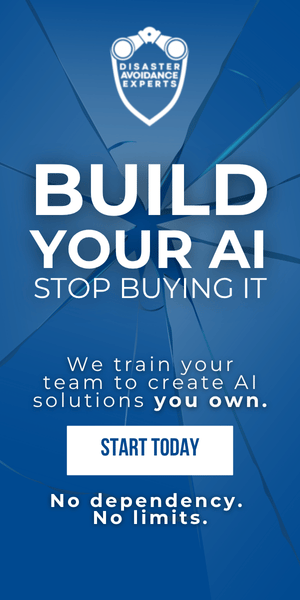- Transitioning to effective remote work requires adapting company culture and mindsets.
- Consider how your actions and choices will impact your teammates’ work experience.
- When remote work enables flexibility and aligns with company culture, it can unlock productivity, innovation, and work-life balance — but care for your colleagues underlies successful distributed teams.
The COVID-19 pandemic forced many companies to rapidly transition to remote work. While remote work offers many advantages like flexibility and work-life balance, making it effective requires intention and thoughtfulness, especially about how our actions and choices impact others.
As Jessica “JJ” Reeder, Director of Remote Organizational Effectiveness at Upwork, shared in a recent interview, “It’s more how am I setting myself and my teammates up to have as much flexibility as possible in our days.” She explains that the key involves thinking about the “second-order outcomes” and being “considerate of the kind of system and process changes that need to happen to make flexible work successful.”
Communication Challenges of Remote Work
A major challenge of remote work is communication. Without the context cues of body language and proximity, communication can easily break down. It’s harder to understand others’ circumstances and perspectives when we aren’t physically together.
Having worked with 25 companies to help them figure out their hybrid work plans, I told Reeder that I tell my clients to divide their communication into three buckets. The most collaborative communication happens in-person. Virtual synchronous communication is next best. Purely asynchronous communication is lowest in richness, with asynchronous video better than audio, and audio better than text.
However, the costs follow the inverse order — in-person collaboration costs the most in time and logistics, virtual synchronous is next, and asynchronous is cheapest. There is a tradeoff between communication richness and cost.
Reeder agreed that asynchronous video communication captures more nuance than asynchronous audio-only communication. However, some people, she pointed out, may better process written text than verbal information. She concludes that using a balance of communication channels is best to “light up as many senses as we can.”
Facilitating Remote Collaboration
In-person collaboration relies heavily on real-time nonverbal cues and improvisation when things go awry. Remote collaboration requires much more intention, planning, documentation and systems to work well.
Before starting any remote collaboration, Reeder highlights the need to spend time providing context on goals, resources, timelines and systems to avoid misunderstandings. Maintain open communication channels for questions and feedback throughout the process. Watch for changes in team dynamics that could undermine collaboration.
Occasional virtual coworking sessions, where individuals work on their own tasks while connected on video, can facilitate the same quick questions and discussions that happen naturally in an office setting. Guided virtual brainstorms at the start of projects, using collaborative whiteboards, help align the team.
Onboarding New Remote Team Members
Studies show, Reeder noted, that junior staff and new hires struggle most with remote work because they lack connections and clarity. Intentionally strengthen onboarding programs with mentors, cohorts and extra touchpoints.
From my work with clients, I told Reeder how peer cohort mentoring groups for new hires from different departments provide a key opportunity for them to support each other. Such groups facilitate cross-organizational networking, and also leverage peer-to-peer learning, which is highly effective for development. Reeder found this notion intriguing.
Adapting Company Culture to Remote Work
Transitioning to effective remote work requires adapting company culture and mindsets. Reeder explained that Upwork sees their physical offices now as places for team immersion experiences, while normal work is remote and flexible.
They intentionally compose globally distributed teams. People periodically travel to offices for team bonding and rich in-person collaboration.
This structure gives them “a vibrant global distributed team” while maximizing flexibility. However, it requires discipline, intention and strong systems to execute well.
The Mindset Shift Needed for Remote Work
Enabling effective remote work is not a simple checklist. As Reeder stresses, there is no one-size-fits-all solution. However, putting yourself in others’ shoes is crucial.
Consider how your actions and choices will impact your teammates’ work experience. Proactively provide the information and support others need to do their best work. Watch for morale issues, confusion and bottlenecks that slow progress.
If you lead a remote team, regularly solicit candid feedback on what is and isn’t working. Experiment with structures like cohort mentoring and immersive collaborations to meet people’s needs.
Remote work makes it easier to focus narrowly on our own tasks and priorities, but thinking broadly about others will lead to greater alignment, engagement and productivity.
Successfully working apart requires bringing people together socially and emotionally. This pays dividends in performance. As Reeder says, “Those are the questions you should be asking: how am I providing opportunities for people to connect?”
Conclusion
Transitioning to effective remote work takes time and continued learning; there is no single blueprint. Adapting well requires empathy, discipline and intention. Most importantly, think about how your actions affect others. Proactively provide support, information and connections to teammates. Regularly solicit feedback to improve collaboration and morale.
Working apart requires bringing people together socially and emotionally. When remote work enables flexibility and aligns with company culture, it can unlock productivity, innovation, and work-life balance. But care for your colleagues underlies successful distributed teams. Reeder notes that you should keep asking yourself: “How can I set my teammates up for success?” With thoughtfulness and compassion, your organization will thrive.


 Dr. Gleb Tsipursky – The Office Whisperer
Dr. Gleb Tsipursky – The Office Whisperer Nirit Cohen – WorkFutures
Nirit Cohen – WorkFutures Angela Howard – Culture Expert
Angela Howard – Culture Expert Drew Jones – Design & Innovation
Drew Jones – Design & Innovation Jonathan Price – CRE & Flex Expert
Jonathan Price – CRE & Flex Expert













